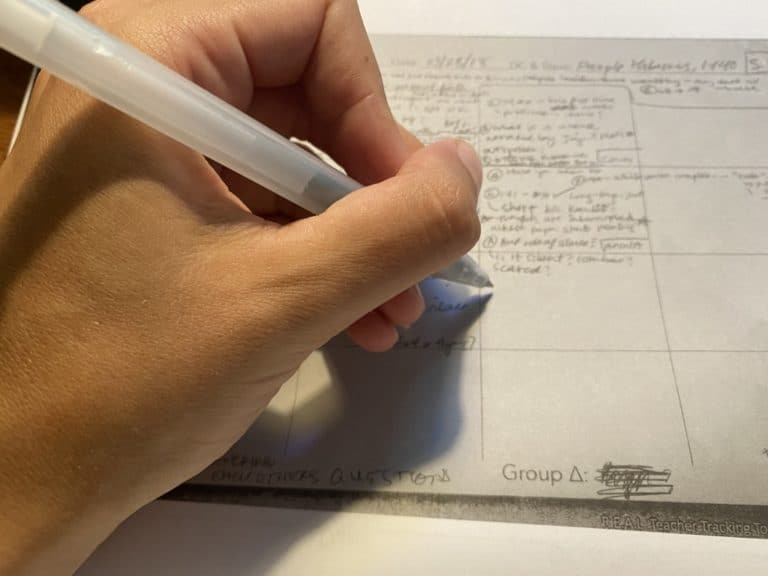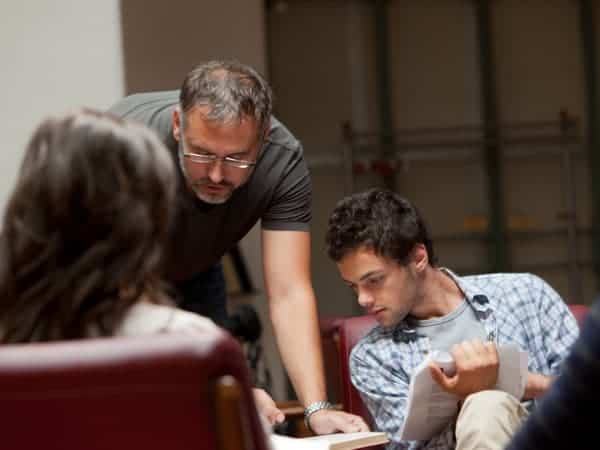Breaking It Down: The “A” in R.E.A.L.
R.E.A.L.® Discussion is a professional development program that equips faculty to teach, measure, and celebrate discussion skills – which students use in the classroom, in the cafeteria, on the court, and, even, at the grocery store (said one sixth grade girl) and on dates (shared a ninth grade boy)!
The system is based on the four R.E.A.L.® Skills, an acronym that breaks the art of discussion into teachable and transferable skills for a generation of students who would rather text than talk. The four skills are Relate, Excerpt, Ask, and Listen – and the program teaches students to practice, master, and reflect on each.
In this series, we’re walking you through each R.E.A.L.® skill. Today, we’re analyzing A – the skill of Asking.
Asking: Skills and Habits
A true discussion is a give and take – not a series of sequential monologues delivered without input from peers. That means asking and responding to questions is a core part of a healthy discussion – and learning to ask questions appropriately is a key skill.
Asking questions might sound straightforward, but it’s not – especially for a generation that creates content without being asked to and lives in a world where algorithms predict their desires before they can articulate them.
In the R.E.A.L.® program, we break “Asking” into two skills: asking questions about the text and context, and asking questions of each other. Within each of those categories, we help students develop habits that help them practice and master these skills.
Questions can take multiple forms: clarifying questions, for example, can help a classmate clear up a point of confusion regarding the topic being discussed or a comment made earlier in the conversation. Context questions are useful in the class’ collaborative effort to interpret the text and understand it on a deeper level. These types of questions can include commentary about historical, literary, social, economic, political, and cultural context and how it relates to authorial intent or reader interpretations.
We teach students that text questions can be either “closed” (yes/no, or one-word answers) or “open” (questions that begin with “how,” “why,” or “compare and contrast”). Students learn to use closed questions to clarify a point of confusion, such as delineating the relationships among characters or confirming a sequence of events, and use open questions to broaden the conversation and explore issues like themes, character development, and more.
When asking questions of each other, we equip students with tools to synthesize a topic and advance the conversation forward, with what we call “put-a-bow-on-it questions.” These types of questions focus on a tension that has emerged in discussion and help the entire group reflect about their opinion.
For example, a student might say, “So, Mike, I hear you about the period of relative peace and prosperity during the Qing Dynasty. But I’m wondering if we can also see examples of trouble brewing in the economic changes of the time?”
When asking questions of each other, we help students develop the skills needed to advance the conversation without demeaning, disrespecting, or embarrassing their peers. We remind them that clarifying questions they ask their peers should be specific and respectful. For example, “Sarah, what do you mean when you say that the Narrator is still a child at the end of the story?” works better than “Uhh Sarah, are you sure? Epiphanies mean someone grows up, you know that right?” or “Wait, Sarah, what did you just say? Sorry, I accidentally tuned you out.”
We know that teaching students how to ask questions works. Over six discussions, we saw a 17-point increase in female students, 10-point increase in male students, and 12-point increase in non-binary/gender fluid students who report that they feel comfortable asking questions during class discussion. As one 10th grader said:
“R.E.A.L. ® has made me conscious that I have started to ask more questions to move the discussion along, rather than just relating to my classmates. I think this is a vital discussion (and honestly life) skill and I’m still working on it, but I have definitely improved.”
10th grade student
As they become more comfortable asking questions of each other and of the text itself, students gain confidence in their opinions and in displaying the vulnerability inherent within question-asking. These traits help produce a more natural, more robust conversation – and they help prepare students to speak up and be vulnerable in the real world, too. As one eighth grader said:
“I feel a lot more comfortable asking questions than I did at the beginning. I also feel like it has helped me grow by really pushing me to use my voice for something I believe in.”
8th grade student
Teaching students how to use their voices to express their beliefs is more important than ever in a screenbound, AI-driven world – and learning to ask questions marks the beginning of a journey toward intellectual humility that will aid students in and out of the classroom throughout their lives.
Want to learn more about Asking and R.E.A.L.®’s other three foundational skills? Reach out to our team for a conversation today.





